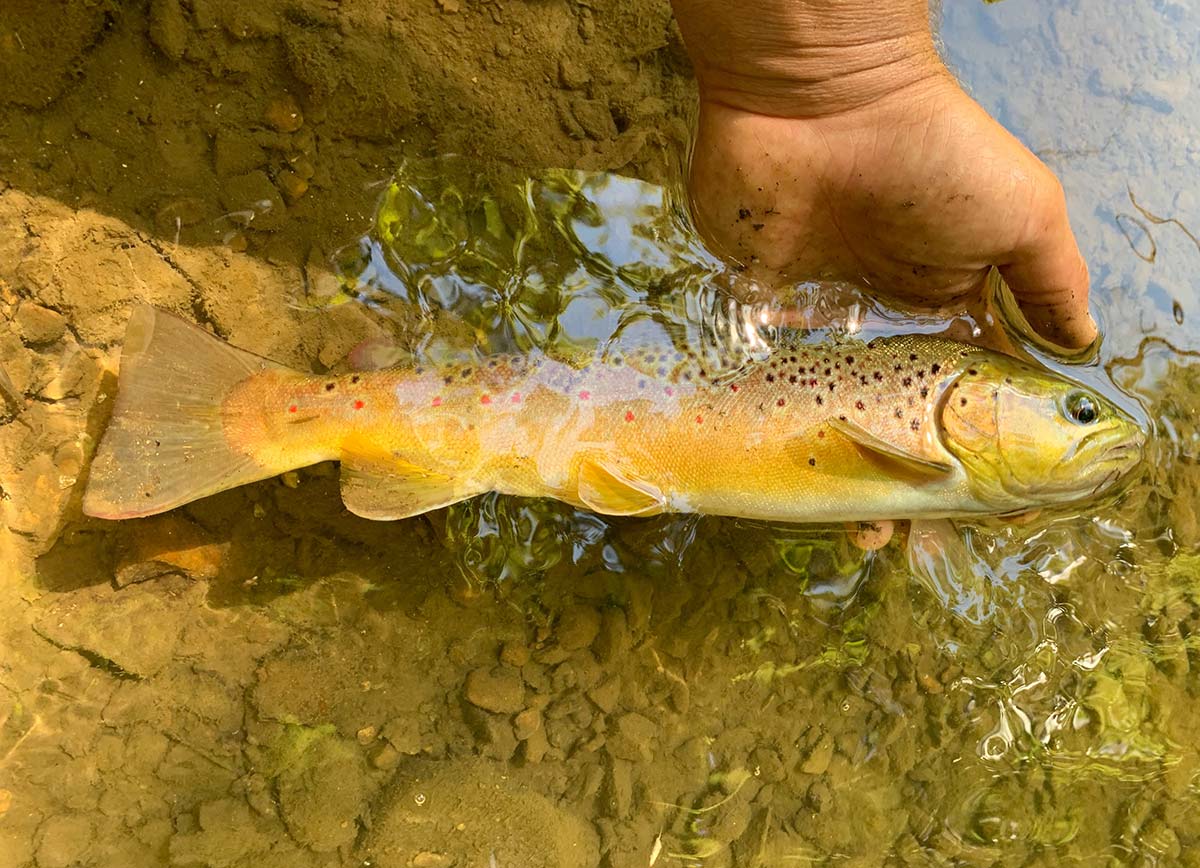
How an invasive species became a naturally-reproducing crowd favorite.
There is no invasive species of fish that is more beloved than the brown trout. Brought over in the 1860s from Europe, they were first introduced to waters in New York State, where their presence was enthusiastically accepted by anglers.
A burgeoning U.S. railroad system soon had brown trout getting introduced to waters out west. Due to their adaptive qualities, brown trout were able to gain a foothold in habitats meeting their requirements of clear and chilly water. They do have an advantage over the already-present native brook trout – in every requirement, brown trout are just a little more tolerant than the brookies, and brown trout can also handle slightly warmer and polluted water.
In the earliest days, anglers were thrilled to see the new trout species with such vibrant colors and spots. And that sentiment holds true in today’s world. I don’t think anyone would ever complain that brown trout are thriving here in the United States despite their invasive status and foreign origins. They are great fighters, jump high, and reach seriously impressive sizes. State records often easily eclipse 20 pounds, with some smashing the 30-pound benchmark. Those are outliers, of course, except in extreme trophy fisheries; typically, Northeast anglers are thrilled to catch fish approaching 20 inches.
It’s fair to say the only beef that saddles the brown trout’s presence arises when they choke out the native brook trout from their native streams. They are simply more aggressive as predators and gradually take over the best feeding stations within pools, runs, and riffles.
Brown trout feed on any insects and terrestrials that come their way. But as they get larger, they also become more adept hunters, upping their predation to small fish, frogs, crayfish, and any other unwary creature they can gobble up, which often includes baby or small brook trout. The varied diet allows for a large selection of fly and lure choices. Blue-winged olives, sulphers, caddis choices, woolly buggers, midges, and scuds are just a sample of effective flies. Most spinners, jerk baits, worm imitations, and trout magnets will score from spinning rods. And where live baits are allowed, any worm species, minnow, or shiner is deadly. Anglers fishing tiny trickles can use 2- to 4-pound test, while moderate to heavy flows might require 6-pound test, given that a trophy fish can really use its size and current for an advantage.
Small streams are most popular and hold browns larger than one would expect. It’s not uncommon to catch fish topping out in the 15- to 20-inch range in creeks that are barely wider than a pick-up truck. It’s a special feeling when a sizeable brown comes from such small waters. Mid-size tributaries of large rivers, and the rivers themselves, hold some of the larger fish that regularly grow above 20 inches. Rocky habitat with sporadic boulders and fallen lumber provide cover and current breaks in any flowing water, and pitching offerings toward current eddies and pockets will find fish waiting for a meal. Still, others will hunker down in deep pools while yet another group will spread out in the riffles.
Large, deep lakes are also trophy brown trout territory where a drifted live bait or different trolling methods utilizing planer boards can work wonders. Some stunningly beautiful and huge browns come by virtue of salmon, steelhead, and lake trout fishermen on glacial lakes and reservoirs that allow fishing.
Brown trout are a year-round fishery. Waters that do not freeze, such as creeks with active, underground springs, will continue to produce in the icy cold that causes other spots to ice over completely. Spring and summer are fantastic, and in October and November, the fish spawn. Some of the biggest trout are caught in the fall before and during the procreation process. If wading, it’s important to completely avoid their redds, the term for spawning beds. Or don’t wade at all during that timeframe and the following months when offspring are maturing. Another option is to fish the deep pools so that the redds and the trout surrounding them are not disturbed.
No other naturally-reproducing trout species is more readily available to those in The Fisherman readership. I have done the computing, and anglers who wish to get away from stocked fish and test their skills on wild trout can get to productive waters within a very reasonable drive. I live within the South Jersey coastal plain, which means no elevation, so it takes me a little over an hour to drive to brown trout turf. Additionally, anglers can hire guides to fly fish or light spin for brown trout on land. Drift boats provide those opportunities on the rivers, and larger boats under power charter on some of the large lakes.




